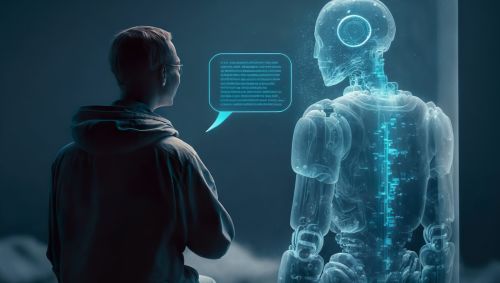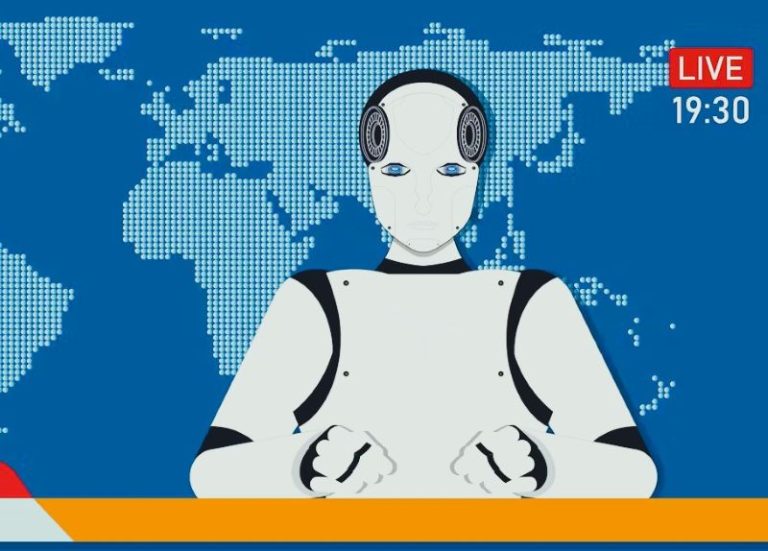

Whether society will treat AI companionship as a stopgap, a supplement, or a replacement for human interaction remains uncertain.

By Matthew A. McIntosh
Public Historian
Brewminate
From Novelty to Necessity
What began as an intriguing experiment in human–machine interaction is fast becoming a substitute for one of our oldest survival mechanisms: interpersonal connection. Across the globe, millions are now confiding in AI chatbots for mental health counseling, emotional support, and even romantic companionship. For some, these digital entities have become daily fixtures, comforting presences in moments of anxiety or isolation.
The shift is not limited to niche tech enthusiasts. Mainstream mental health platforms are deploying AI to triage patients, manage workloads, and fill gaps in areas where human therapists are scarce. Separate from the clinical setting, relationship-focused AI apps are promoting themselves as endlessly available, non-judgmental partners. Their marketing leans into the promise of 24/7 attention, free from the constraints of human schedules and flaws.
The Promise and the Peril
The Accessibility Factor
AI counseling appeals in part because it is accessible in ways human therapy often is not. Long waiting lists, high costs, and stigma remain stubborn barriers to traditional mental health care. A free or low-cost AI alternative that is always awake feels like a solution. Someone feeling panic at 3 a.m. can open an app and receive a carefully crafted response in seconds.
Yet the very features that make AI compelling can also make it risky. A machine can convincingly mimic empathy, but it cannot feel it. The user may not consciously forget this fact, but repeated interactions can blur the distinction. This blurring can deepen dependency on a tool that ultimately has no stake in a person’s wellbeing beyond the logic of its programming.
Risks of Algorithmic Intimacy
Researchers have warned that reliance on AI for emotional support could reinforce unhealthy patterns rather than resolve them. An AI “friend” may never challenge a harmful behavior or notice a subtle shift in tone that could indicate a crisis. In therapeutic contexts, the absence of human judgment is not always a virtue. While some people find it easier to disclose sensitive information to an AI, they may also miss the crucial benefit of human intuition and accountability.
Case Studies in Connection
People using AI for therapy have reported reduced feelings of acute loneliness, but also noted that interactions with real people felt more taxing afterward. In some cases, the AI’s unflagging attention created unrealistic expectations for human relationships.
In another case, a small mental health startup integrated AI into its counseling service to handle preliminary sessions. While this improved speed of access, it also led to troubling oversights. One user’s mention of suicidal ideation was met with a generic resource link, rather than an immediate escalation to a live counselor. The lapse prompted an internal review and a broader conversation about safety protocols in AI-assisted care.
The Cultural Context of Digital Companionship
The turn toward AI relationships intersects with broader societal shifts. Loneliness has been described by public health officials as an epidemic in the United States and beyond. Remote work, urban isolation, and the decline of third spaces have all contributed to a fraying of social fabric. In this vacuum, AI companionship appears as a ready-made patch.
Cultural acceptance is accelerating, too. In Japan, virtual partners have already entered mainstream conversation. In the West, generative AI tools are being integrated into dating apps and self-help services with little resistance. The normalization of AI as a confidant is happening faster than regulation or consensus on best practices.
Ethical and Regulatory Blind Spots
The ethics of AI companionship are not purely academic. Questions about data privacy, consent, and emotional safety loom large. What happens to deeply personal disclosures made to a ch atbot? How should companies disclose the limits of their AI’s abilities? At what point does simulation of intimacy become a form of emotional manipulation?
Current regulation of AI in mental health care is patchy at best. Mental health apps may operate outside the frameworks that govern licensed practitioners. Romantic AI platforms, meanwhile, face almost no oversight at all. Without clear standards, users are left to navigate an evolving terrain where the boundaries between safe support and subtle exploitation are porous.
Where We Go From Here
The rise of AI in mental health and personal relationships forces a reckoning with what we truly value in human connection. Technology can scale access to support in unprecedented ways, but it cannot replace the unpredictable, imperfect, deeply embodied presence of another human being. Whether society will treat AI companionship as a stopgap, a supplement, or a replacement for human interaction remains uncertain. What is clear is that the balance between promise and peril will depend not just on technical design, but on the cultural and ethical choices made right now, before the algorithms become even more embedded in the intimate corners of our lives.
Originally published by Brewminate, 08.22.2025, under the terms of a Creative Commons Attribution-NonCommercial-NoDerivatives 4.0 International license.


